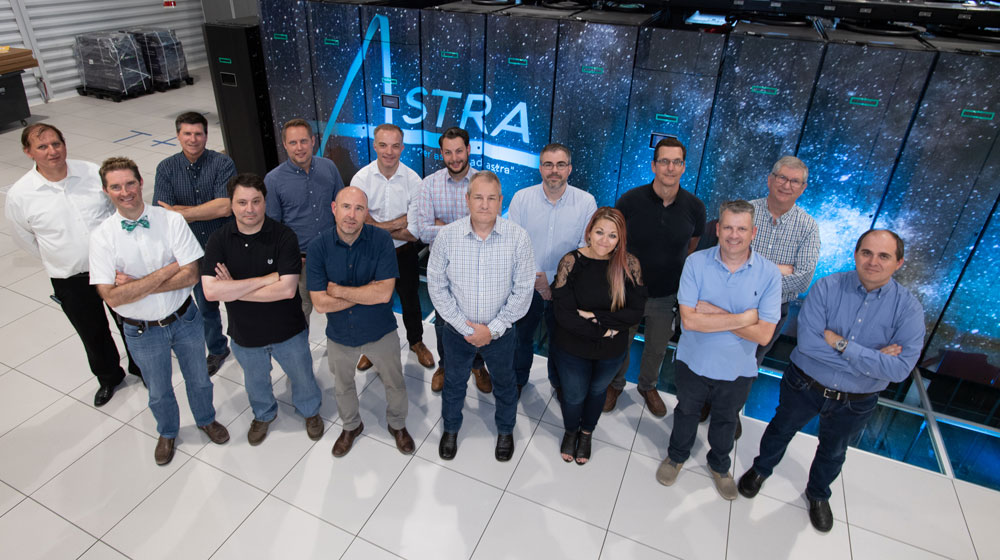
Enabling power management on Astra
Collaborating with industry partners, Sandia codeveloped power measurement and control capabilities for the Astra supercomputer. This enables the team to explore trade-offs among application performance, system power usage and temperature. Experimental results demonstrate the ability to improve performance by up to 10% while staying within the system’s thermal constraints. This work will guide the design of advanced power management in future high-performance computing systems, which is vital considering the steadily increasing power usage of such platforms. (1000, 9000)
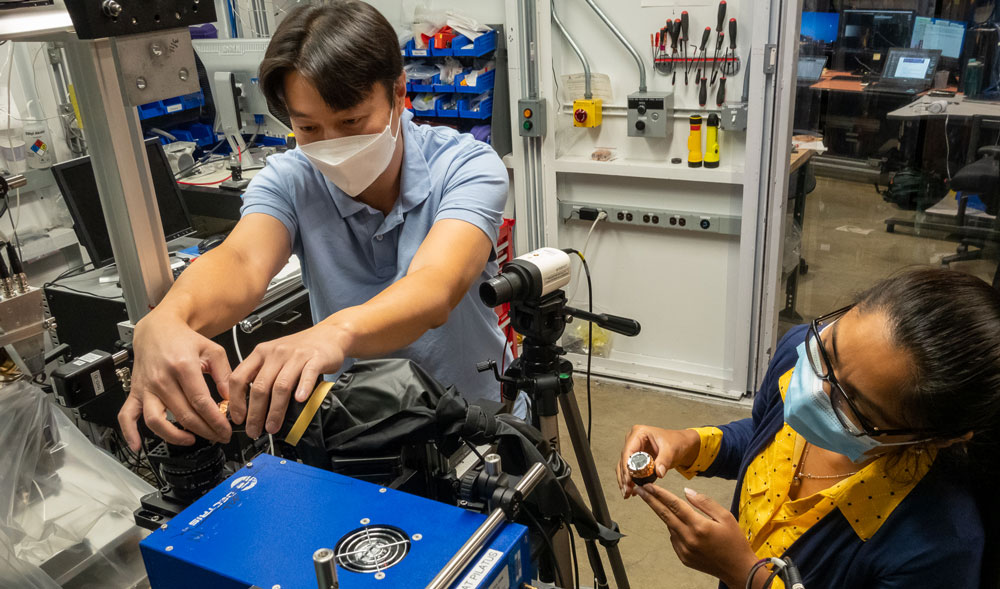
Material structure on the fly
The arrangement of atoms in a material — layers stacked like apples at a farmers market or lined up as squares — influence many physical properties of materials. The Labs developed time-resolved X-ray diffraction on both the Z Pulsed Power Facility and the pulsed power driver THOR to measure this structure under dynamic loading, then tested its capabilities at the Advanced Photon Source at Argonne National Laboratory. The team successfully measured structural phase transitions during impulsive extreme pressure events. (1000, LDRD, ANL)
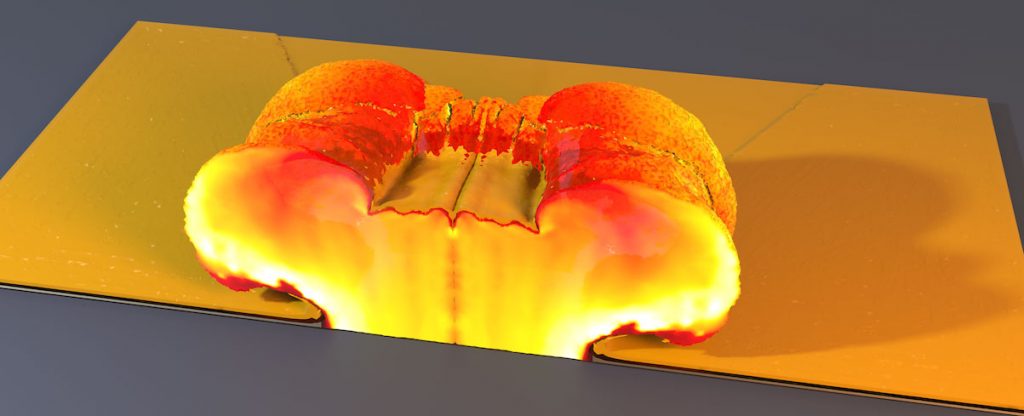
New detonator design capability
Using the newly released multiphysics code LGR, or Lagrangian Grid Reconnection, hundreds of thousands of simulations were performed on the Sierra computer at Lawrence Livermore National Laboratory to obtain an extraordinarily detailed map of design parameter space to train a reduced-order machine-learning model. The previous simulation capability required several hours to run, and an LGR simulation can run in approximately 10 minutes, but the reduced-order model runs in less than a second. This enables nuclear weapons component designers to use LGR simulations directly in the design workflow. (1000, 2000, 7000, 8000, LLNL)
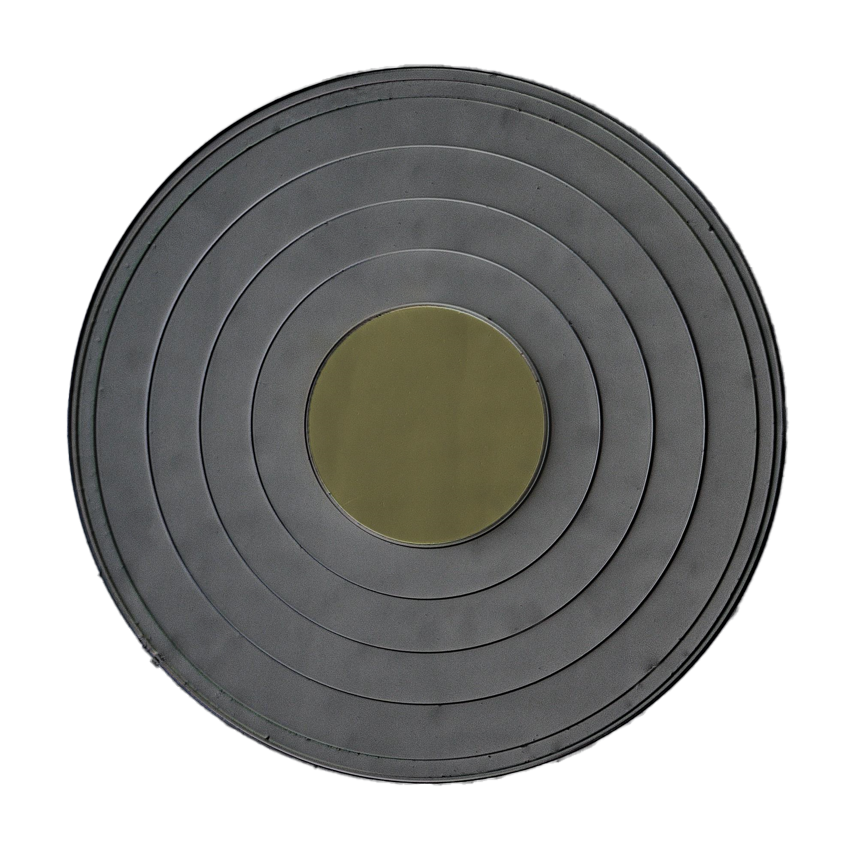
Record-breaking grid protection switches
A wide bandgap materials and devices team demonstrated a compact device that can shunt excess electricity within nanoseconds while operating at a record-breaking 6,400 volts — a significant step toward electromagnetic pulse grid protection. EMP surges are 100 times faster than those caused by lightning, so existing devices designed to protect the grid against lightning strikes have questionable effectiveness against an EMP. This advance is a key step toward creating devices that can operate at around 20,000 volts, beyond most grid distribution voltages. (1000, ARPA-E)

DIVERSE-W: Encouraging women to pursue inventorship
To address the gender gap in inventorship, Diversity and Inclusion in InVentorship and EntrepReneurship Strategies and Engagement-Women engaged women researchers in a cohort program to increase participation in innovation and technology transfer. Participants networked across the Labs while learning to navigate the Sandia innovation ecosystem. DIVERSE-W also hosted a DOE-wide speaker series to inspire researchers, featuring accomplished women from 3M; High Water Mark, a New Mexico woman- and native-owned small business; NASA; and a panel of four women innovators from FermiLab and Oak Ridge, Idaho and Sandia national laboratories. (1000, ORNL, INL)
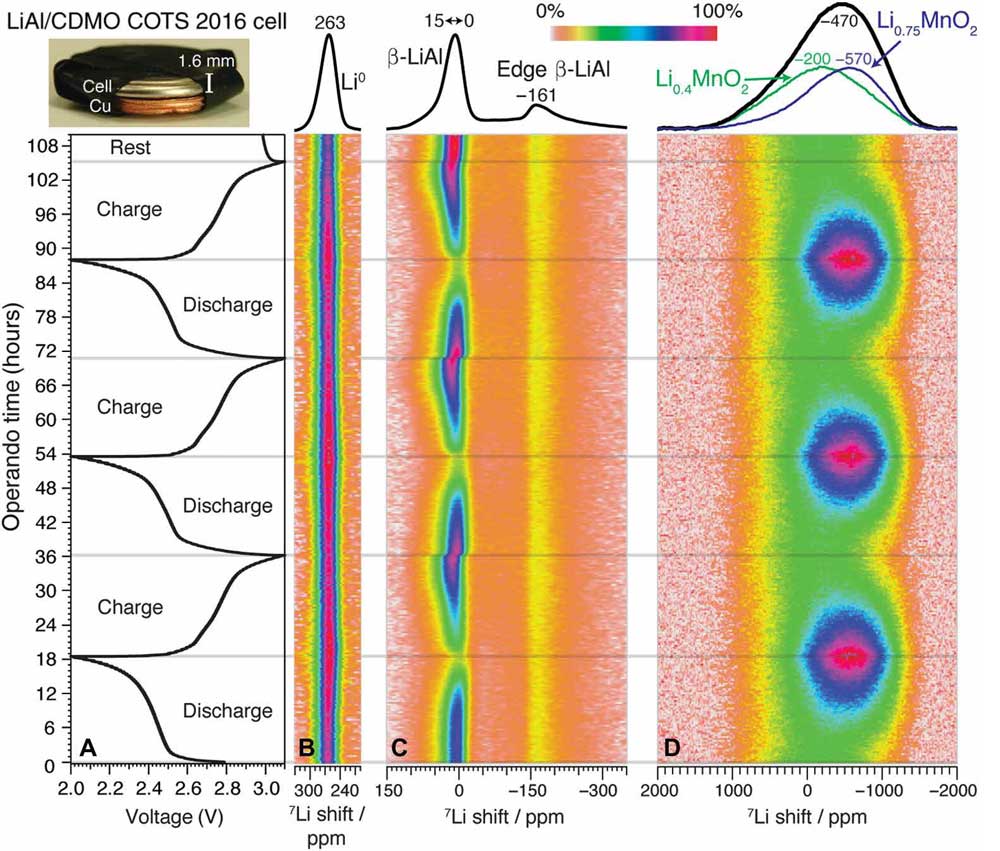
Energy storage R&D advanced characterization
Two complementary techniques were first demonstrated for advancing the development of next-generation batteries. Nuclear magnetic resonance analysis was previously considered incompatible with coin-cell battery metal casings. Sandia demonstrated operando NMR in coin cells by developing an NMR probe. The team also demonstrated a cryogenic laser milling technique for cross-section scanning electron microscopy analysis of entire coin cell batteries to reveal battery failure mechanisms. (1000, 2000, LDRD)
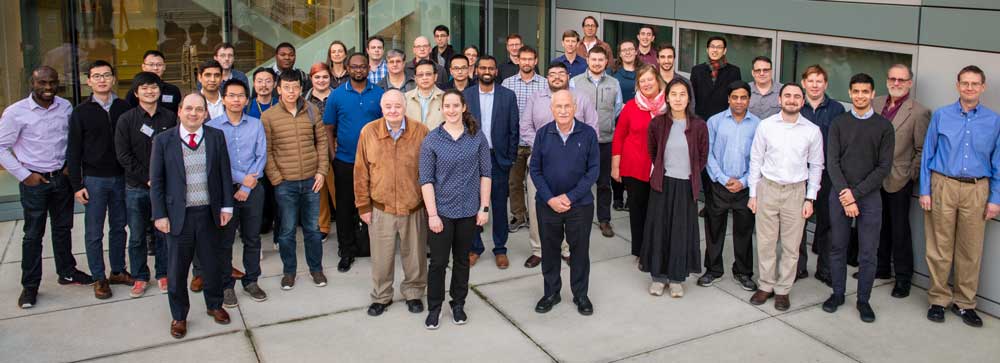
The Institute for the Design of Advanced Energy Systems
IDAES, a collaboration between Sandia, National Energy Technology Laboratory, Lawrence Berkeley National Laboratory, Carnegie Mellon University, West Virginia University, University of Notre Dame and Georgia Institute of Technology, received an R&D 100 award for the release of the IDAES Integrated Platform. Built in a Sandia-developed Pyomo modeling environment, IDAES enables optimal design and implementation of complex, interacting energy systems from individual plant components to the entire electrical grid, ensuring environmentally sustainable, reliable and cost-effective national energy infrastructure. (1000, 8000, NETL, LBNL)
Enhanced nuclear reactor fuel inspections
Advances in fuel inspections at the Annular Core Research Reactor resulted in the most comprehensive understanding of fuel health since reactor start-up in 1978. Developing a comprehensive fuel-health program and designing and implementing diagnostic equipment that uses nondestructive evaluation techniques — including ultrasonic, mass measurement, visual and dimensional measurements — made the achievement possible. Inspections were completed in the summer after a high rigor readiness review to ensure safe operations with new equipment and updated processes. Fuel-health program execution will enable reactor operations that support Sandia’s mission. (1000)
Power delivery for Z successor
A next-generation pulsed power machine will require delivery of more than 50 million amperes to centimeter-scale targets to produce the world’s brightest X-ray and thermonuclear fusion environments for stockpile stewardship. New experiments on the Z Pulsed Power Facility using scaled transmission lines demonstrated the ability to deliver the equivalent current density under the same electric and magnetic fields as a next-generation pulsed power facility with essentially no loss. These innovative tests provide additional confidence in design studies for a future machine. (1000)
Faculty Loan Program for Joint Appointments
Academic Programs has launched the Faculty Loan Program for Joint Appointments to enable Sandia staff members and faculty members at partner universities to hold joint appointments at both institutions. So far, New Mexico State University and the University of Arizona are in the program, with plans to add more schools in 2022. The program is intended to deepen Sandia’s strategic relationships with university partners and increase the diversity of Sandians partnering with universities. Partnerships across Sandia were critical to establishing the program. (1000, 3000, 4000, 10000, 11000)